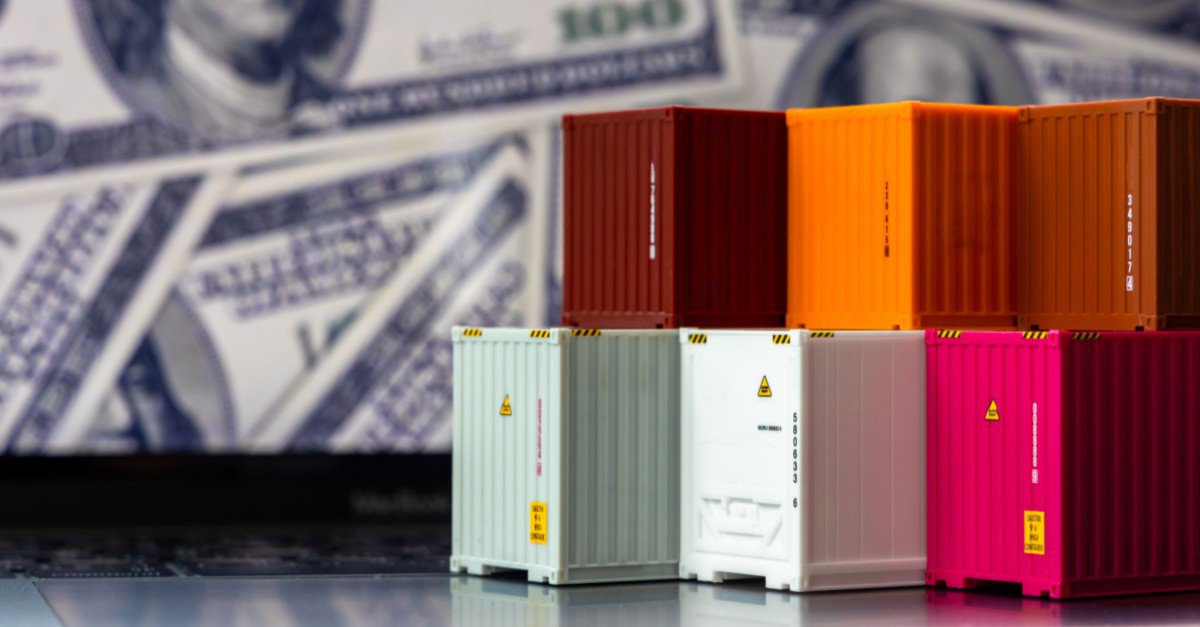
Importing and exporting goods account for an ever-growing percentage of the world’s shipping and transportation supply lines and tight markets. World trade supplies large and small supply chains with goods and products and employs hundreds of thousands of drivers in each niche market it covers. These global trade lines require careful management and specialized trade finance services to keep them operational.
UNCTAD’s Global Trade Update, published in February 2022, shows “that in 2021, world trade in goods remained strong and trade in services finally returned to its pre-COVID-19 levels. Overall, the value of global trade reached a record level of $28.5 trillion in 2021. That’s an increase of 25% in 2020 and 13% higher than 2019 before the COVID-19 pandemic struck.” Understanding the scope of shipping container volume and the worth involved with global trade can bring into focus the need for financial backing and assistance. In addition, the pressure put on shippers, carriers, forwarders, and drivers demands outside service.
This trend is why trade finance and freight finance have become vital to importing and exporting service management. Finding the resources to allow for easy financing of capacity and cargo containers and financing the tools and equipment required is at the heart of the global trade market today. Finance trade or asset-based trade financing can make all the difference for shipping importers and exporters.
What Is Transportation or Freight Finance?
At the most basic level, freight financing involves the cost of moving a container. Shippers use this financial backing to cover expenses related to securing capacity, paying drivers, protecting shipping costs, offsetting fuel expenses, and similar charges related to freight transportation. Current Drewry container data from the composite World Container Index shows shipping rates decreased by 0.6% to $7,578.65 per 40ft container as of June 9. Finance trade negotiations and arrangements generally cover the costs that factor into these figures. Without sound financial backing, shippers and carriers can’t take full advantage of the best shipping routes and trade lanes.
Where the Usual Transportation Financing Strategy Falls Short?
Most shipping contracts state that clients will issue payments within a specific time. The shipper or carrier is responsible for managing finances and covering expenses.
These are commonly referred to as 60 and 90 Days Net. When contracts have a 90 Days Net term, this means payment is due in full within 90 days from the receipt of the invoice. Essentially the client has up to 90 days to make the payment to the shipper or carrier. A 60 Days EOM arrangement means payment shall be within 60 days from the last day of the calendar month of invoice receipt. Again, the client has up to 60 days from that month’s last day to pay the invoice in full.
The terms for shippers with a limited credit history are pre-pay, and they typically have to use credit cards. Even for the more established shippers, 30-day net is typically max terms, where Freight Financing can extend to 60 days or even up to 90 days.
Though an industry norm for decades, this is an inferior transportation financing method. Freight or transportation finance options are in high demand due to the many challenges of traditional financing options:
-
Limited cash flow and access within the company.
-
Delays in finding future company growth.
-
Issues with paying third parties for services.
-
Constraints on growth and expansion.
-
Poor insight into customer needs and demands.
-
Lack of flexibility to take advantage of peaks.
-
Difficulty weathering valleys within profits.
-
Missed opportunities due to insufficient funding.
-
The ongoing struggle to keep everything paid.
-
Poor potential for future growth and success.
-
Additional stress and pressure from poor cash flow.
Using freight factoring and transport finance payment services can help make it easier for companies to manage cash flow and stay on top of expenses between invoice payments of ocean freight.
Still, the ultimate challenge with financing services related to freight shipping and transportation is balancing and knowing when to assume risk and how to find outside resources to help fill in the gaps between pay windows. Transportation and finance trade services help address this issue.
What Is Trade Financing and How’s It Different From Freight Finance?
Trade finance and freight finance might seem like nothing more than two sides of essentially the same coin. But, while they have similarities, the two are very different. Understanding finance trade and freight transportation financing come down to a few key distinctions:
-
What the money does for the shipper or carrier in the freight market.
-
How it helps manage day-to-day operations and services in the supply chain.
-
Where the money goes for the short and long-term benefit of the company.
-
How much impact does it impact the shipper or carrier and their services?
-
The way the money moves throughout the supply chain network.
When looking at these points, the critical distinction is that freight finance is financing for the cargo movement. It is the expenses associated with the cargo, container capacity, and shipping. Trade financing covers both the financing of the goods inside the container in addition to the funding needed for equipment and other trade-related processes. This allows the shipper to collect on the expected proceeds of selling the goods, prior to ever selling them. Freight and transportation financing both are critical for the ongoing success of import and export supply chains today. It is important to remember that both offer similar services from a shipper or carrier perspective. Yet, each has distinct advantages vital for successful ocean import and export services.
Why Trade Finance Matters to Freight Management Parties?
Like most things related to supply chains and transportation management, trade financing and transportation finance services impact the entire network. At every step of the process, every third-party partner or vendor and carrier or shipper are affected by transport finance negotiations. This financial backing is critical to continued growth and success, especially during times of volatility and uncertainty. Finance trade is how they get equipment, increase capacity, and expand to new customer bases. Without substantial financial backing, no shipping company or transportation service provider can reach its full potential. In addition, dealing with customs clearance, taxes, legal paperwork, and other requirements of import and export services is more manageable without the added stress and worry of making it to the next invoice payment date.
The Bigger Picture: Shippers and Carriers / NVOCCs Have Different Interests
Shippers are impacted by trade finance primarily because of their import and export supply chain role. Shippers are the ones who generally supply or own the commodities that need to get shipped. Carriers likewise can be impacted by finance trade terms and agreements—these individuals or companies transport goods on behalf of another individual or entity. For example, Company A may get listed as the shipper for a product listed in an online store, but it does not own vehicles to transport the goods. So it works with a carrier to get the goods to the customer's doorstep. This approach takes money to plan, coordinate, and execute, which is why trade finance is so important for shippers and carriers.
-
Shippers and carriers are both generally concerned with freight or trade financing, paying for the cost to move a container.
-
Carriers are also responsible for paying for assets, focusing on trade and transport financing and management.
-
Shippers with owned assets may also prioritize trade finance to make purchasing or renting such equipment easier.
-
NVOCCs and 3PLs may be concerned across shipper- and carrier-leaning needs for trade and transportation finance.
-
Shipping and logistics improvements remain vital for all partners and companies involved in import and export services today.
Trade and transport finance services cover different services and can offer financial support to shippers and carriers in several ways. The trade funding and financing process can involve several parties, including the buyer and seller, the trade financier, export credit agencies, and insurers. It is a delicate balance between different parties, each working towards their own goals while working with industry partners and other entities to keep things running smoothly and moving forward.
Understand Freight Finance vs. Trade Finance and Boost Your Capacity with FreightMango
When faced with the dilemma of locating and securing trade financing or freight financing, professional insight and guidance can make a difference. Partnering with leaders in the industry can make it easier for shippers and carriers to connect the trade finance services they need to continue their current growth and recovery trajectory. Industry leaders like FreightMango can help bring all the players and ensure everyone’s needs are met.
As a digital freight marketplace, they can help keep transportation costs down, provide reliable finance trade assistance, and give shippers and carriers an easier time managing the supply chain. Contact FreightMango today to sign up and see how easy import and export logistics and finances can be with the proper support, insight, guidance, and backing.





 Get instant quote
and compare offers in real time
Get instant quote
and compare offers in real time